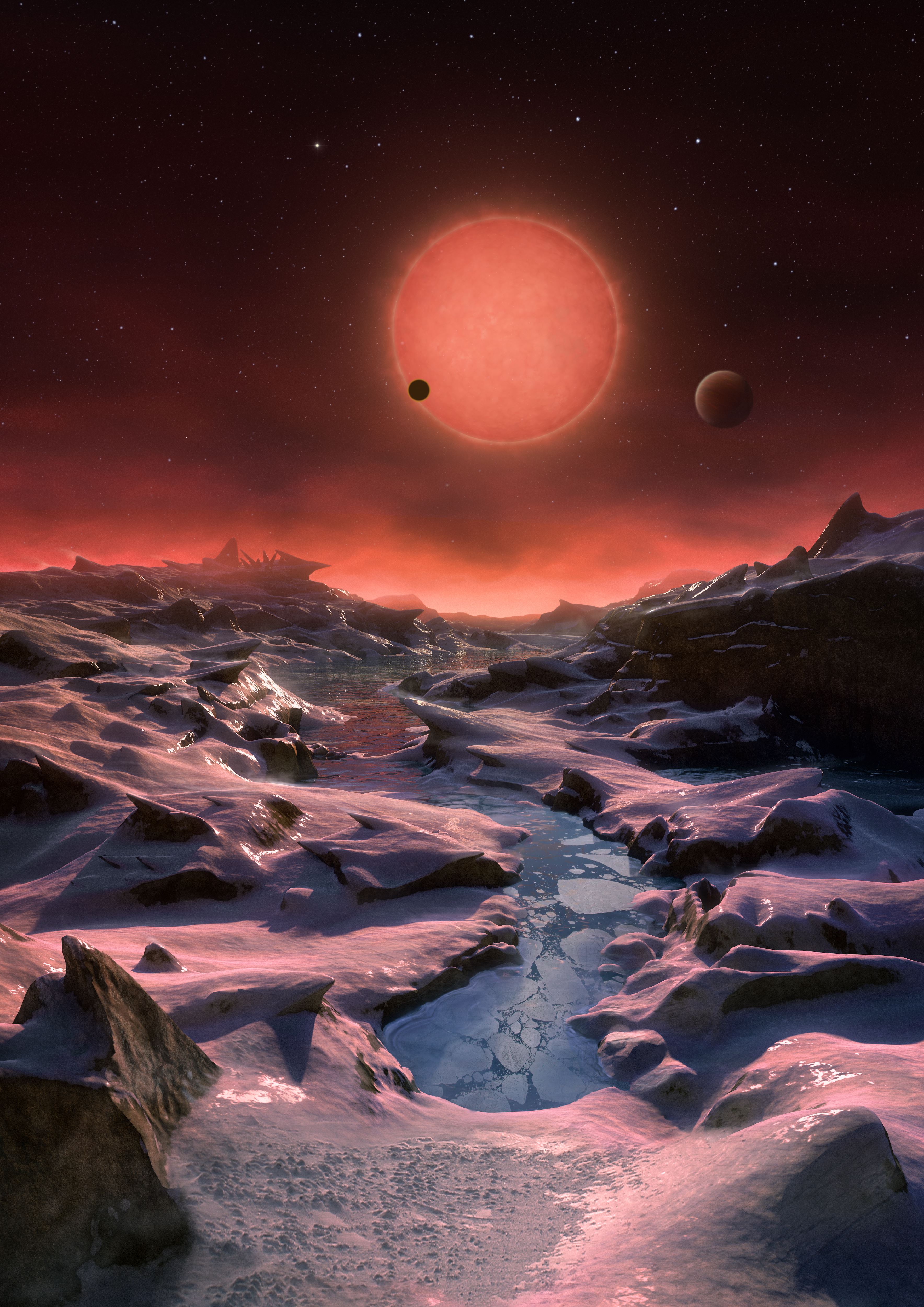Let's start off with the less immediately useful news. For the very first time, we have detected planets...in another galaxy. Yes, you heard me, another galaxy. And we're not talking about one of Magellanic Clouds, or even Andromeda, we're talking about planets in the quasar galaxy RX J1131-1231, which is, um, 3.8 billion light-years away. Yeah, we're not getting there any time soon.
 |
The second bit of exoplanet news is, well, not exactly practical, but certainly much more so that intergalactic exoplanets. TRAPPIST-1 is, after all, 100 million times closer to Earth that RX J1131-1231. If that name rings a bell, it should, I've written about it before. A seven planet system around a red dwarf, three of which are in the habitable zone? And at only 40 light-years away, TRAPPIST-1 is close, much closer than any of the other potentially habitable exoplanets we've found, which are almost all Kepler discoveries and are hundred or even thousands of light-years out. That makes it a very inviting place to study, and study it we have. TRAPPIST-1 (named for the Belgian beermakers, if you're curious), is likely now the most studied solar system outside our own, and the results we've gotten so far are very promising. We've found water, and lots of it. We've found these planets don't have thick hydrogen/helium atmospheres and are almost certainly terrestrial.
While nearly all the planets in the system are interesting, TRAPPIST-1e is particularly noteworthy. It's a bit smaller and a bit less massive than Earth, but it has a very similar density to Earth, meaning it most likely has an iron core, like Earth. And that means a magnetic field. It likely doesn't have a tremendously thick atmosphere or an enormous world-covering ocean. It receives nearly the same amount of light Earth does. Granted, 1e is tidally locked, but in every other way, it's exactly the sort of planet we've been looking for. I expect to hear a lot more about TRAPPIST-1e in the future.

No comments:
Post a Comment